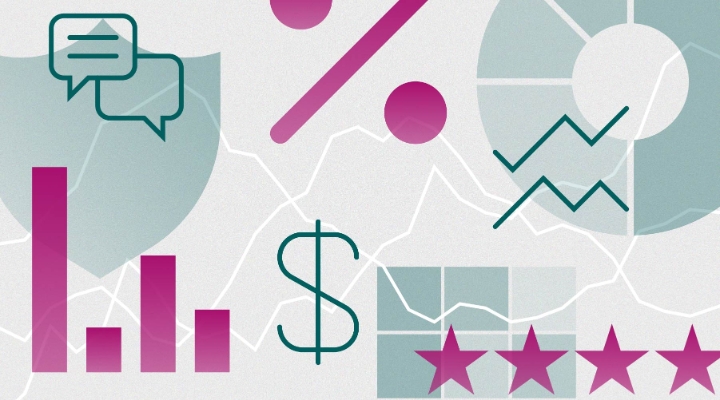
Improving gender diversity remains an uphill challenge, but slowly, we are seeing more women in leadership roles, and the gender pay gap narrowing. But there are still only eight female CEOs in the FTSE 100, and the number of female fund managers is still lagging significantly.
Many people are interested in supporting the companies that are making the important strides towards gender equality, as seen in the increasing number of gender funds launching globally. But, this might surprise readers: these funds have consistently performed poorly over the trailing five years.
Morningstar’s senior manager research analyst Kenneth Lamont has looked at the makeup of these funds, their performance, and their survival rates. He explains: “Sitting at the intersection of thematic and sustainable investing, gender funds have benefited from the rising popularity of both in recent years.”
So what are the reasons behind this lacklustre performance?
Let’s start at the beginning: what is a gender fund? Simply put, these strategies select holdings based on gender criteria. Each fund will have its own approach, but collectively, they tend focus on four key areas – women in leadership, equal pay and opportunities, female-friendly products or policies, and transparency. These funds are buying the companies with the best metrics within these categories, and they may also engage with portfolio companies to improve their gender metrics.
Using Morningstar Direct, we have identified close to 50 such funds in our global fund database. None of these are domiciled in the UK – most are North American – but 19 of them are based in Europe (mainly Luxembourg and Ireland, but also Germany, Spain, France, Belgium and Liechtenstein).
How Badly Have They Performed?
Over the past years, and before the invasion of Ukraine in particular, there’s been a growing focus on how ESG can bring improved performance, and an increased push within the fund management industry. We’ve seen how sustainable funds tend to attract inflows time and time again, while those without a sustainability mandate suffer outflows. And we’ve seen many gender strategies being launched, too. In 2021 alone, 13 gender funds were launched, with great expectations. But so far, they have failed to deliver.
When looking at year-to-date figures, and over one, three and five-year periods, the vast majority of the funds have underperformed the benchmark. In addition, these funds have low survival rates. So far this year, 40 funds have underperformed while only eight funds have outperformed. Another three funds have closed. Therefore, if you invested in a gender diversity fund at the start of this year, you only have about a 19% chance of it surviving and outperforming its benchmark. But the chances get slimmer the longer the horizon.
“If you were to pick a gender fund at random five years ago, the chances of it surviving and outperforming the appropriate benchmark are less than 7%,” Lamont says.
Why Have They Underperformed?
According to data from Morningstar Direct, the underperformance can be attributed to a persistent aggregate underweight to certain industries versus the appropriate Morningstar benchmark indices. In particular, these funds are underweight in tech and energy, which has worked against them. On average, they tend to also be overweight in financials and healthcare.
Fees also play a part. Gender funds tend to charge more than their purely passive market peers which makes for a stronger headwind. Finally, it’s hard to beat the market making active decisions – gender or otherwise, Lamont explains.
Are Funds with Better Diversity Less Profitable?
While these numbers and arguments may make it seem like firms with a strong focus on female leadership, opportunities and policies are providing weaker returns, this is not necessarily the case.
“The run of poor performance doesn’t wholly disprove anything per se. But it doesn’t support some of the more lofty alpha claims heard in some areas of the fund market either,” Lamont says.
“There is a possibility that the data metrics currently used to run funds are not adequate to capture a gender alpha. There will also be periods in the future where gender funds perform relatively well, although how long investors will need to wait for this, and whether your chosen gender fund will still be live to profit remains to be seen.”
Can I Use These Funds to Reward Companies with Gender Positive Policies?
For some investors, the goal of buying these funds is to combine asset growth with personal beliefs and to reward companies with certain positive behaviours. However, the current size of gender funds globally suggests that the reward for gender positive companies will be limited.
Total assets for this group hit a high of $5.1 billion globally last year and have since come down to $4.1 billion. These figures coincide with consistent inflows across 2021, peaking in May 2022 – and a subsequent year of outflows, the largest of which was seen last February. However, as of August, global assets in gender diversity funds are in fact twice as high as we saw for gender funds three years ago, in late 2020.
Lamont notes that rewarding companies for their gender equality practices works best with huge asset flows, such as those from institutional sources like pensions. Instead, he says: “Investors considering these funds should ask themselves whether investing in a low cost tracker (with a track record of engaging with companies on gender issues) and investing the profits into a gender-focused charity or organisation might better meet their desired outcomes.”







:quality(80)/cloudfront-us-east-1.images.arcpublishing.com/morningstar/JPJHXR5CGSNR4LKQF5ZKLCCVYQ.png)




















